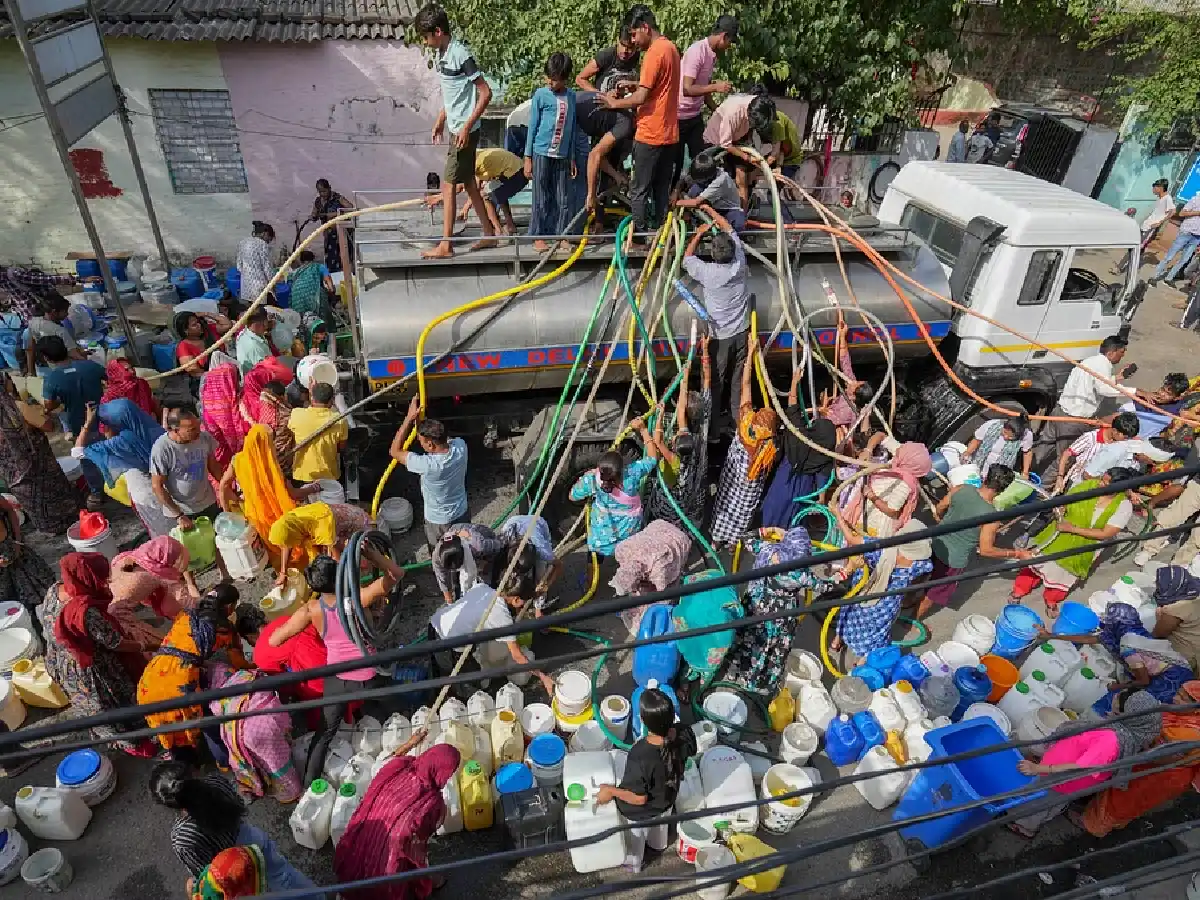Delhi are already suffering from poor air quality caused by pollution. At the same time, individuals in Delhi are also experiencing issues as a result of a lack of water. There is a scarcity of water in numerous regions of South and Central Delhi which will persist until November. Repair work is currently being conducted at two water treatment facilities in Delhi, leading to a water shortage caused by pollution in the Yamuna river.
Many parts of Delhi, such as Lajpat Nagar, Mayur Vihar, Laxmi Nagar, Preet Vihar, Greater Kailash, Vasant Kunj, Kalkaji, Amar Colony, Panchsheel Park, Sarita Vihar, Malviya Nagar, and Geetanjali Enclave, are experiencing a water shortage. The New Delhi Municipal Corporation oversees all of these regions.
The Bhagirathi and Sonia Vihar water treatment plants (WTP) are currently running at just 30% capacity, forcing them to rely on the Yamuna River temporarily, as reported by the Delhi Jal Board (DJB). Nevertheless, the ammonia concentration in the Yamuna River has exceeded 1.5 parts per million (ppm). Processing water from both the Ganga and Yamuna rivers, the Bhagirathi and Sonia Vihar WTPs have capacities of 110 million gallons per day (MGD) and 140 MGD.
As per the DJB, ponds were to be constructed at different points along the Upper Ganga Canal to procure Ganga water by October 21. Yet, the Ganga supply was interrupted because of yearly maintenance conducted by the Uttar Pradesh irrigation department. The WTP subsequently had to depend on the Yamuna river for a different raw water source until midnight on October 31st. However, the Yamuna contained a significant amount of ammonia.
Generation capacity at Bhagirathi and Sonia Vihar has been decreased to just 30%. Aside from that, the generation will be entirely reliant on the caliber of the raw water in Yamuna. The Jal Pradhikaran stated that the production from these plants will differ.
Meanwhile, the alleged discharge of industrial waste was attributed to the Haryana government by DJB vice-chairman Vinay Mishra. The Delhi government plans to engage in discussions with the Haryana government in order to find a solution to ensure clean water for the people of Delhi.
At the same time, DJB vice-chairman Vinay Mishra accused the Haryana government of being responsible for the reported release of industrial waste. The Delhi government will have a discussion with the Haryana government in the near future to address the problem and ensure that residents of Delhi have access to clean water. Furthermore, clear guidance was provided to the officials to ensure that the water treatment plant operates at full capacity once the water quality improves.
The increased ammonia levels in the Yamuna river, causing a 30% decrease in water production, have been attributed by the Delhi government to the release of industrial waste from Haryana and Uttar Pradesh. Elevated levels of ammonia have been consistently found, particularly in January and February this year, causing disruptions in production, particularly at the Wazirabad WTP. The government reported that water treatment operations were impacted by ammonia concentrations reaching 0.9 ppm.

